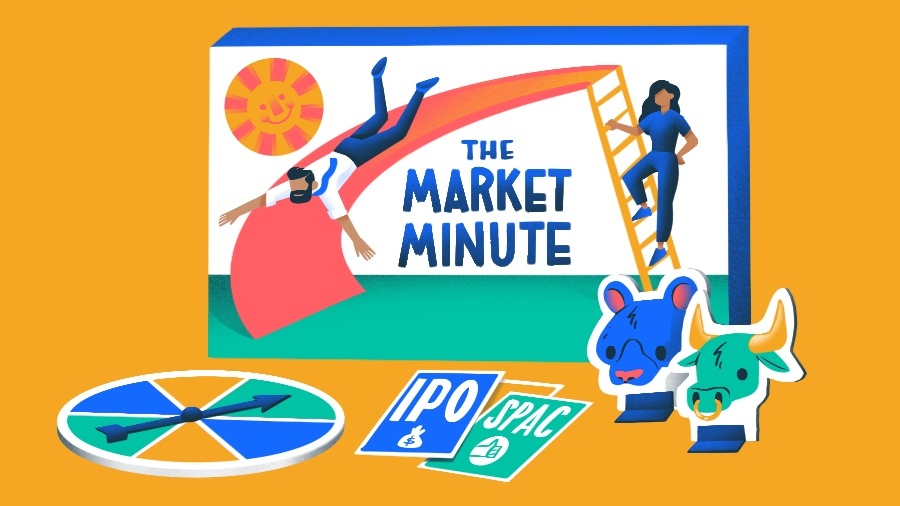Jack Dorsey made waves Monday when news of his resignation from Twitter broke.
Subscribe to the Crunchbase Daily
In a letter to Twitter employees that he also posted online, Dorsey noted there are a lot of conversations around the importance of companies being “founder-led.” He called that notion “severely limiting and a single point of failure.”
Dorsey’s departure as a founder isn’t all that uncommon. To the contrary, it’s actually pretty uncommon for a founder to stay through an IPO, according to John Danner, a lecturer at UC Berkeley’s Haas School of Business.
But trends in corporate governance—most notably the popularity of dual-class common stock—and companies going public earlier through blank-check mergers have contributed to founders sticking around longer in recent years.
A Crunchbase analysis of U.S.-based VC-backed companies that went public in 2015 on the New York Stock Exchange and Nasdaq found that only around a third have a founder as CEO now.*
There’s also the distinction of being a CEO in name only versus one who actually controls the company.
Danner pointed to a 2018 study from the Harvard Law School Forum on Corporate Governance that found among companies that IPO, 60 percent no longer have founders as CEOs.
And since they usually have little voting power, only half of the others make it three years as CEO post-IPO. The study noted that for a founder who raises his or her first round of VC funding, the probability of that person taking a company public and retaining “real control” of it three years after its IPO is a mere 0.4 percent.
“To some extent it’s not surprising, because anytime an entrepreneur is in the process of raising capital, they’re selling their business,” Danner said.
Meta CEO Mark Zuckerberg is a notable example of a founder still controlling a company in both name and power, nearly a decade after the IPO of the company once known as Facebook. But cases like his are an exception, according to Danner and Brian Broughman, co-author of the 2018 study and a law professor at Vanderbilt University Law School.
“Most founders do not have that control, and if they thought they had it they may lose it when negotiating for subsequent rounds of financing,” Danner said.
Some notable examples of VC-backed companies that went public in 2015 and still have a founder as CEO:
Some notable examples of VC-backed companies that went public in 2015 without a founder as CEO:
The “survival rate” for founders who exit their company through a merger or acquisition—a far more common way for a startup to exit than an IPO—is even lower. It’s much less likely for a founder to remain CEO of a company after another business acquires it; that’s part of why Google’s acquisition of Fitbit is unique–Fitbit founder James Park still holds the title of CEO of Fitbit.
It’s more common for a startup CEO to be replaced pre-IPO, according Broughman. Investors can push for new leadership as a condition of financing a company, prompting a founder to step down—and it’s not always adversarial, either, he added. In other words, when a startup founder steps down, it doesn’t always involve a boardroom coup d’etat like in the case of Travis Kalanick and Uber.
Broughman noted that the number of founders staying on through an IPO and then three years post-IPO are likely a bit higher in recent years (his study looked at companies that received their first round of VC funding between 1990 and 2012).
There are a couple reasons for that. First, there’s been an increasing use of dual-class common stock for companies going public. A dual-class structure creates a new class of common stock that’s typically held by the founder and has more votes per share than the other stock. That makes it much harder to replace a founder.
Dual-class common stock isn’t a new concept at all, but it wasn’t common in the past for venture-backed companies. However, Google opted for a dual-class structure when it went public in 2004, and the use of dual-class common stock has increased in the past five years or so, according to Broughman.
“It kind of paved the way for other companies when they have the discussions with the underwriter for the IPO to push for that,” he said.
Another factor that’s likely led to more founder-CEOs staying on is some prominent VC firms like Andreessen Horowitz have pushed the idea of being “founder-friendly,” which has rippled through Silicon Valley.
And companies exiting through the SPAC route—an increasingly popular way for startups to go public—are making their market debuts earlier in the company’s lifespan, so founders are more likely to stick around, according to Broughman.
“I do think the last three or four years have had a meaningful shift in this direction,” he said of founders leading their companies through an IPO.
But while there’s been a shift to a more founder-friendly atmosphere in recent years, he added that founders retaining control of a public company is “not as common as these idiosyncratic founders that are in the news would suggest.”
Crunchbase Pro queries used in this article
Methodology
For this analysis, we looked at U.S.-based venture-backed companies that went public in 2015 on the New York Stock Exchange or Nasdaq. We did not include biotech companies or companies that have since been delisted in our analysis. Danseke was omitted from the data, because it began trading in 2017 after being acquired by a blank-check company that went public in 2015.
To verify leadership, we checked S-1 documents, company websites and news reports to find if the CEO during the IPO in 2015 was also a founder, and if a company’s founder currently serves as CEO.
1Illustration: Dom Guzman
This analysis did not include biotech companies or companies that were delisted–see our Methodology section.↩

Stay up to date with recent funding rounds, acquisitions, and more with the Crunchbase Daily.



![Illustration of a guy watering plants with a blocked hose - Global [Dom Guzman]](https://news.crunchbase.com/wp-content/uploads/quarterly-global-3-300x168.jpg)
67.1K Followers